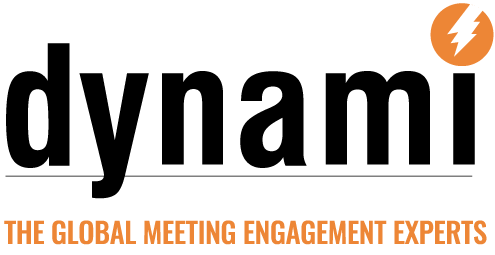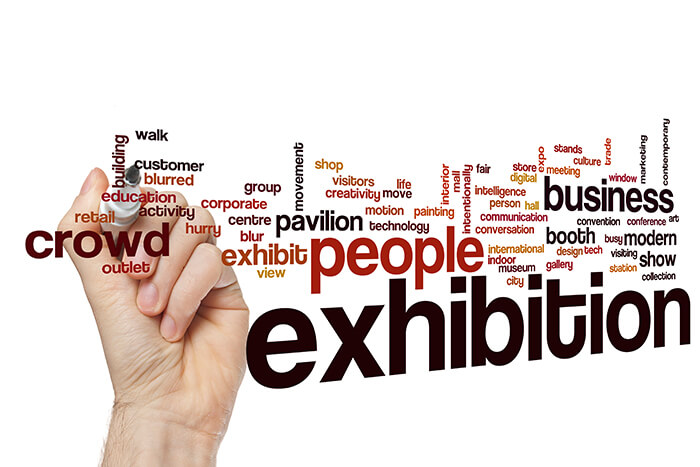Trade shows are an important element of customer events, but they are also time-consuming, labor intensive and many times very costly. Targeting the right exhibitors for your conference attendees while ensuring a great value to those exhibitors is a delicate balancing act. You need to be always looking for ways to improve exhibitor retention rates, increase exhibit space and sponsorship sales, as well as identify new opportunities for growth.
To help us take a closer look at how companies who are hosting meetings with trade shows are tackling these challenges, we’ve asked Tracy Oosterman, founder of One More Sponsor, to join us for a Q&A and here is what we learned.
Kenneth: Just to give us a little background information, what is your role in the trade show world?
Tracy: Our team at One More Sponsor acts as a consultant for the company hosting the trade show as part of their event. Together with the client, we create the full exhibitor and sponsor experience that starts with the prospectus, continues through the sales process for the booth packages and sponsorships, and ends with, well, it doesn’t really end. I was going to say that it ended with the exhibitor survey, but it really doesn’t. It’s important to start the next year’s exhibitor management while the fire’s hot, so it’s really an on-going project. Our goal is to increase ROI for not only the hosting company but for the exhibitors and sponsors while always focusing on the conference attendees and the value they receive in the trade show aisles.
Kenneth: It’s definitely a balancing act. What is the biggest challenge a trade show host company faces and how do you recommend tackling that challenge?
Tracy: Most Show Organizers struggle with proving an exhibitor or sponsor’s ROI, which will ultimately be the deciding factor in their participation. The key here is to align the interest of attendees with the products or services offered by the exhibitor or sponsor. Attendee profiles, pre-show surveys, industry trends, new product releases and feedback from the previous year are all great resources to align exhibitors with conference attendees.
Kenneth: All great points, and with the right information management, the ROI is much easier to prove. What methods do you use to increase the value of a show for an exhibitor or sponsor while minimizing their time, efforts, and costs?
Tracy: One of the ways we do this with exhibitors is by providing the right technology tool to allow them to schedule 1:1 meetings with conference attendees. It isn’t enough to just stand in the booth during the set show hours and hope a hot lead meanders into your space. You have to find that lead and nurture it even before the trade show floor opens. When the show organizer provides a technology like Eventmobi or a geo-locating app, it helps facilitate the right environment for the exhibitors to connect more easily with the attendees. When you are thinking about minimizing their time, effort and costs, digital is the way to go. I see less and less printed materials stacked at the booth and more unique promotional items these days. Exhibitors are getting smart (and their budgets are being scrutinized) by using digital signage to open the conversation. When it’s displayed digitally, the exhibitor can customize for each show vs. having a generic one size fits all brochure. It’s then sent electronically, and the sales cycle continues.
Kenneth: I agree completely. Who wants to carry home a stack of brochures? And these days if you don’t have a conference app you are far behind the trend. Many times, the app actually saves money in addition to the valuable information it supports. Speaking of money, do you have a formula you use to determine what to charge for booth space and sponsorship packages?
Tracy: No two shows are alike, but it’s important to look at the history of the event. If you’ve never had a trade show as part of the conference, the ROI is much more difficult to prove, and therefore it limits the price of the packages. We also consider the costs required to produce the trade show, how many exhibitors there will be, and how exclusive the industries represented will be among other factors.
Kenneth: Carpeting, internet, electricity, security… it all plays a role. Once you have secured an exhibitor, how do you convert them to a sponsor?
Tracy: It’s important to note that depending on the show, being a sponsor can be an additional element of being an exhibitor or it can be a stand-alone package. There are times when a company’s branding and marketing presence is needed but not necessarily their physical presence in a booth. More commonly, though, the sponsorship package is an upgrade to the booth package. As long as I’ve been doing trade shows, the first sponsorship item to sell is the lanyard. All attendees will be wearing your logo around their neck for the duration of the conference. One of the ways we move exhibitors into sponsorships is by only offering the attendee contact list to sponsors. It’s a great incentive that adds value before and after the event. We usually recommend Show Organizers offer attendees the option to opt-out of having their information shared. There are many more ways to increase the conversion rate, but I can’t give away all of my secrets!
Kenneth: Understood! I’ve also seen promotions for the sponsors in the post-show surveys to allow one last touch for the sponsor. What data do you track for Post-Show Evaluations and how do you go about collecting it?
Tracy: We use Survey Monkey to collect feedback from the exhibitors and sponsors following every show. It’s imperative to poll not only the exhibitors and sponsors about the trade show but also the conference attendees. Ask both groups about the hours, the offerings, the variety of exhibitors, layout, etc. It needs to be a positive experience for both groups. I think the most important thing to remember about post-show surveys is that the information collected is direct from the source. You need to use it to shape future events. It’s not useful if you don’t incorporate the feedback to make other events even better than the last.
 ABOUT TRACY: Boston native, Tracy Oosterman founded One More Sponsor in 2008 to help nonprofits connect with the right corporate sponsors needed to make their events profitable. Previously in her career, she sold sponsorships for American City Business Journals and Time Warner/Southern Living. Tracy has built an extensive network of relationships over the past 20 years beginning in Atlanta and the Southeast and expanding nationwide.
ABOUT TRACY: Boston native, Tracy Oosterman founded One More Sponsor in 2008 to help nonprofits connect with the right corporate sponsors needed to make their events profitable. Previously in her career, she sold sponsorships for American City Business Journals and Time Warner/Southern Living. Tracy has built an extensive network of relationships over the past 20 years beginning in Atlanta and the Southeast and expanding nationwide.
Related Post:
Trade Show Traffic Boosters That Work
8 Tips for Attracting Corporate Sponsors
Thank you, Tracy, for taking the time to share your expertise with us.
Until next time!





